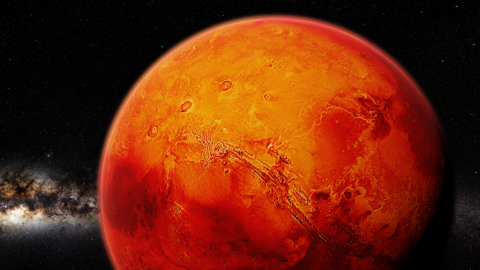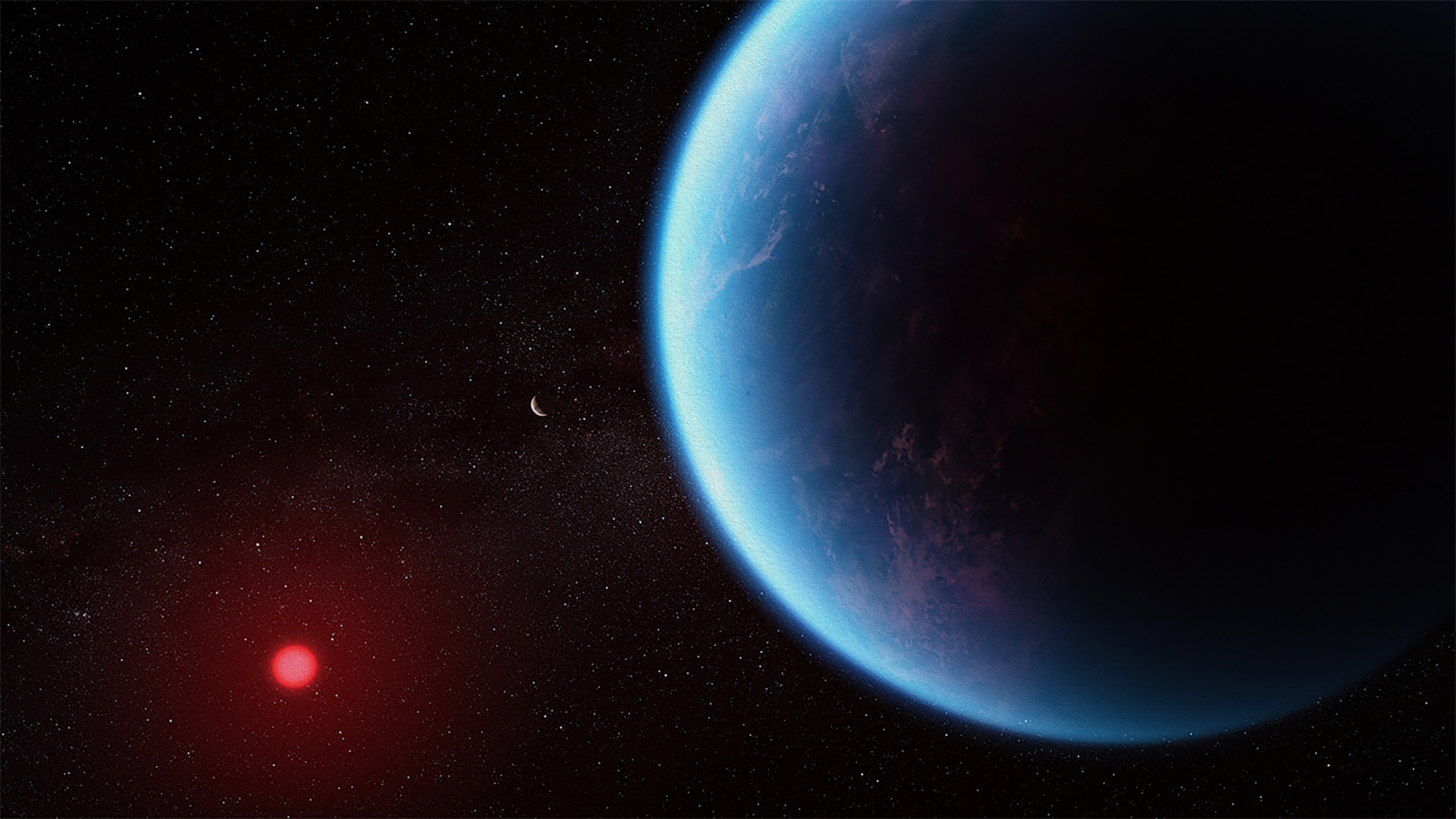A world covered with blood

Think of Mars, and all sorts of imagery comes to mind. The frozen canyons, the dry, ancient river beds, the awful dust storms, the exploring rovers, and, of course, the possibility of life, either in the remote past or now.
Mars is the Roman god of war, guardian of soldiers and farmers. The connection with war comes from even earlier, from the Egyptians and the Greeks, who called him Ares, son of Zeus and Hera. Surely, the reddish color of the Martian surface—thanks to iron-rich minerals and dust on the surface, visible even with the naked eye—inspires a feeling of uneasiness.
What kind of creatures could inhabit a world that seems covered with blood?
The Red Planet has a central place in the history of astronomy, not just in the popular imagination. Between 1601 and 1609, the German astronomer Johannes Kepler used observations of its orbit to deduce its elliptical shape, contradicting thousands of years of astronomical lore. Up to then, we thought all orbits had to be circular. Why? Being the most perfect of shapes, circles must have been used by the “designer” (whatever God that Greeks, Romans, or Christians believed in) as the cornerstone of celestial architecture. Kepler’s discovery is a good lesson of how science works, clearing up biases as it moves on.
In 1877, the Italian astronomer Giovanni Schiaparelli used Mars’ proximity to Earth to study its surface in as much detail as he could. He identified long striations which he called canali, the Italian word for “channels.” Most people, keen on a bit of mystery, interpreted Schiaparelli’s findings as a signature of alien engineering, what we today would call a technosignature.
Speculations went off like fireworks. Perhaps an ancient civilization, struggling to find water, built the channels to bring water down from the frigid poles to the warmer equatorial regions? Funnily enough, the observations only appeared when viewed with a telescope; photographs taken with the same telescopes revealed nothing much. A popular explanation was that since photographs needed long exposures, thermal fluctuations near the Martian surface erased or distorted the viewing, similar to when we drive on a hot road and see pools of “water” wavering and disappearing as we near them.
The short of it is that most people bought the story. In 1895, Percival Lowell—an entrepreneur and millionaire-turned-astronomer—used his money to build a large telescope in Flagstaff, Arizona, to take a closer look at the Martian channels.
The War of the Worlds

Just three years later, H. G. Wells published the classic The War of the Worlds, the story of a Martian invasion that in many ways mirrored the imperialistic practices of his home country, England. Aliens have always been projections of the best and worst that humankind has to offer. In Wells’ story, it was the worst.
The same way that two intelligent species can’t apparently coexist, expansionistic empires can’t either. On Earth, the clashes of these imperialistic tendencies culminated in the Great World War of 1914. In The War of the Worlds, the invaders had developed horrendous war machines that dwarfed anything in our arsenals. What ended up killing them was Nature—more precisely, Darwinian natural selection, and not technology: the invaders had no immunity against terrestrial microbes and quickly succumbed to illness.
Wells’ book was a watershed. There had been other works of fiction speculating about alien life—even Kepler wrote one—but none quite like this. It primed the popular imagination to take the existence of aliens seriously, especially those with evil intentions towards Earth.
Orson Welles used this fear quite brilliantly in his 1938 radio program, also titled War of the Worlds. It was an early and extremely successful example of the power of “fake news.” News flashes detailed an alien invasion with great drama, including terrifyingly realistic sounds of shots, tanks moving, people screaming, bombs exploding—all of this in New Jersey. The result was mass panic in the local population.

Or maybe not. There is quite a bit of controversy about how effective the program was to drive people into the streets. Still, the alien fear became part of the American identity and a popular plot of countless movies and books ever since.
War of the Worlds movies followed the Welles broadcast. The 1953 version, directed by Byron Haskin, and the 2005 version, directed by Stephen Spielberg, each adapted to its current political reality. Haskin’s echoes the atomic age and the Cold War, while Spielberg’s focuses on the undoing of the traditional family and the terrorist threat. The Martian monsters are the monsters we carry inside. (Two TV miniseries based on The War of the Worlds are also comingsoon.)
No trace of life
In the 1960s and 1970s, spaceships from the Mariner and Viking programs proved that there was no extensive channel network on Mars—or any trace of an intelligent civilization, past or present. However, the planet does have a fascinating geological history, including valleys of ancient rivers and extremely long canyons, as well as tall mountains. Since the memory of a planet’s past is engraved in its rocks, Mars’ surface tells a tale of much different beginnings.
Unfortunately, no trace of any kind of life, past or present, has been detected. The atmosphere, rich in carbon dioxide, is too thin to stop deadly radiation from the sun. With gravity about 40 percent weaker than here, Mars couldn’t hold on to most of its water.
Many scientists still hope that Mars hides secrets from us, in particular of older or subsurface life forms. Although possible, such expectations are remote. We must keep looking, of course, as there is no other way to find things out. But the more we look at Mars and worlds in neighboring solar systems, the more we realize how exceptional and unique our home planet is.
The post A World Covered with Blood appeared first on ORBITER.





